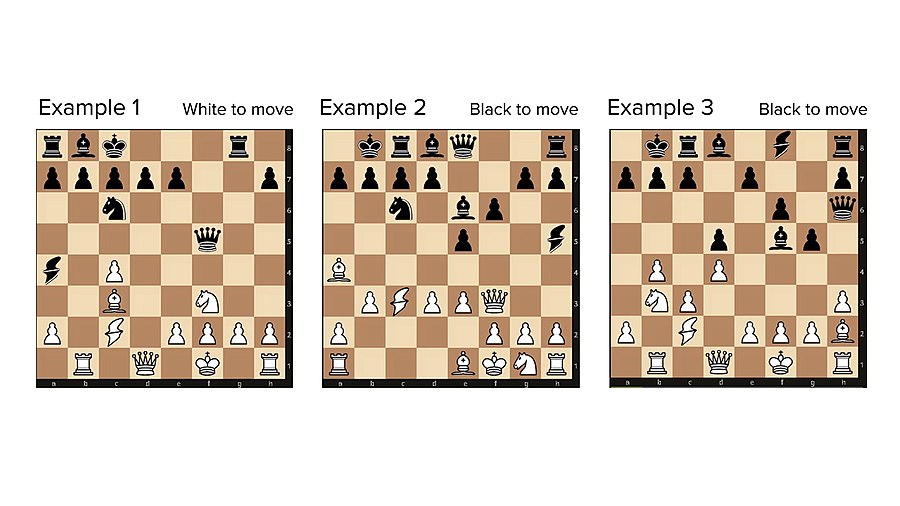Wizard Chess

Wizard chess is a chess variant that introduces a new fairy piece, the Wizard. The Wizard is a hopper piece that moves across any of four mirrors on the board: a vertically placed mirror between the D and E file, a horizontally placed mirror between the 4th and 5th rank, and a mirror along each diagonal. After mirroring, the Wizard has to move one additional step orthogonally to the direction it mirrored in, much like the orthogonal step a knight makes after taking two steps in either direction. If a Wizard mirrors across a diagonal that it is already on, the mirror move has a distance of 0 after which the Wizard can still move one step orthogonally to the mirroring direction - this comes down to the ability to move one step forward or backward along a diagonal that it is on. In addition, the Wizard can also move in the exact manner of a pawn, including queening upon reaching the opponent's back rank, taking two steps forward on its first move, taking diagonally forwards, and taking en-passant. Note that the pawn move is the only way for the Wizard to change the color of the square it is on, as well as that of all the squares it is attacking.
In the opening position, each side has one Wizard piece, one knight, two bishops, two rooks, a king, a queen, and eight pawns. The opening setup is particular to the game with the rooks in the corners and next to them the bishops. As in classical chess, the king can castle towards both sides. However in the opening position, each Wizard is attacking both squares adjacent to the opponent's king, making it harder to castle. This additional difficulty tends to bring the king to the center, making the game less orthodox and more dynamic.


The concept of using mirrors in chess is not new, for example in Reflection Chess and Tony Paletta's Teleport Chess there is a single fixed-mirror between file four and five across which pieces may transport to a vacant square on the corresponding square on the other side[1]. And in Billiard's Chess or Snooker Chess, the edges of the board act as mirrors, ricocheting the pieces back like billiard balls. The concept of a piece's available squares being dependent upon its current position on the board is also not new since for example in Pinwheel Chess (Ralph Betza, 1973) the board is divided in 16 pinwheels of 2x2 squares that rotate either clockwise or counter-clockwise upon a piece entering it.
The novelty of Wizard Chess is that it entails only one special fairy piece, the Wizard, that does the mirroring moves. It adds a level of complexity while keeping the game playable plus making it more intense and dynamic with early game checkmate and queening threats. The game especially requires the player to improve his or her creativity and positional insight.

NOTE: Wizard Chess was invented by Ralph Zoontjens in 2020 and is not to be confused with Wizard's Chess as introduced by author J.K. Rowling in her novel Harry Potter and the Philosopher's Stone.
References[edit]
- ↑ Pritchard, D. (1994). The Encyclopedia of Chess Variants. Games & Puzzles Publications. ISBN 0-9524142-0-1. Search this book on

External links[edit]
| This chess-related article is a stub. You can help EverybodyWiki by expanding it. |
References[edit]
This article "Wizard Chess" is from Wikipedia. The list of its authors can be seen in its historical and/or the page Edithistory:Wizard Chess. Articles copied from Draft Namespace on Wikipedia could be seen on the Draft Namespace of Wikipedia and not main one.
